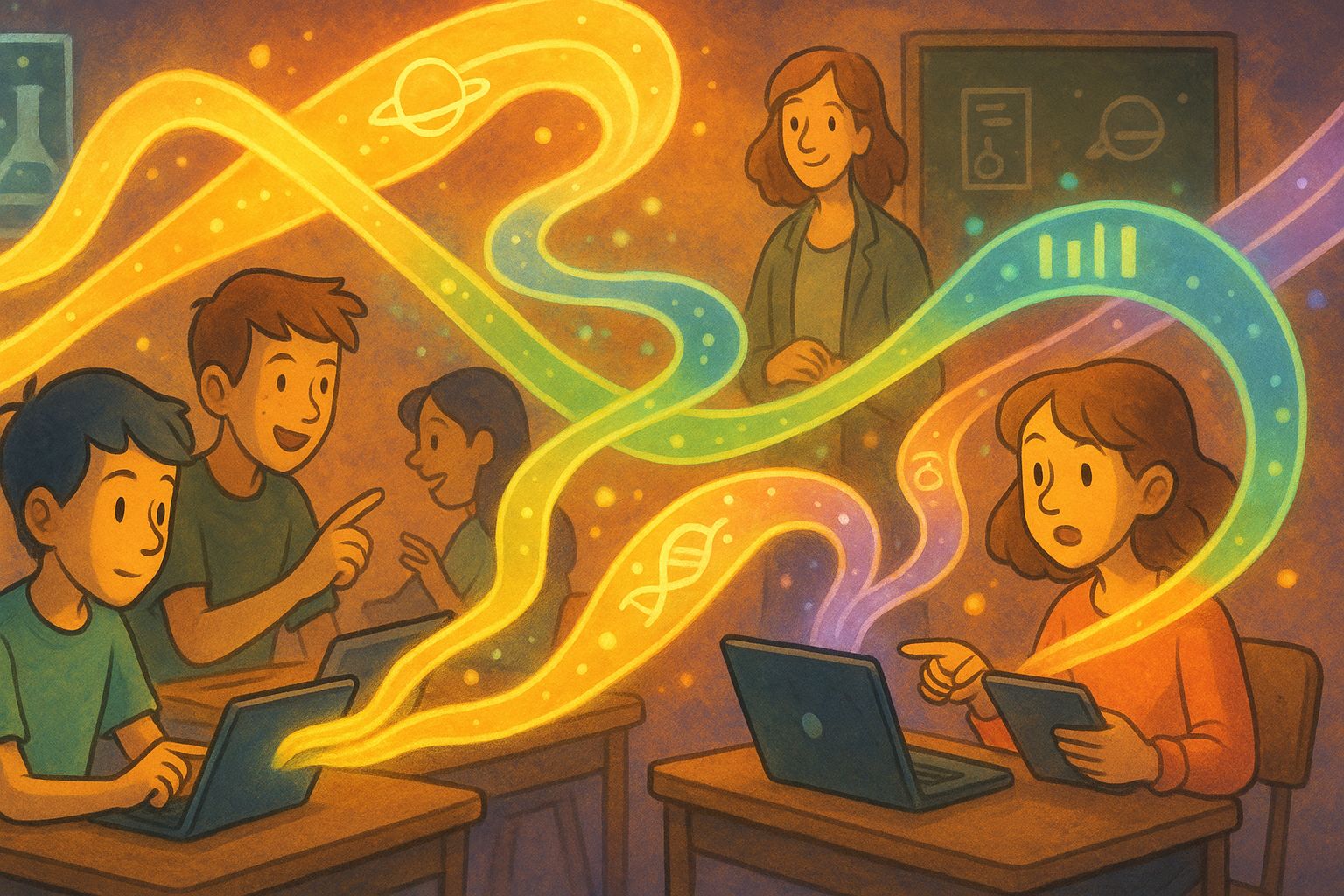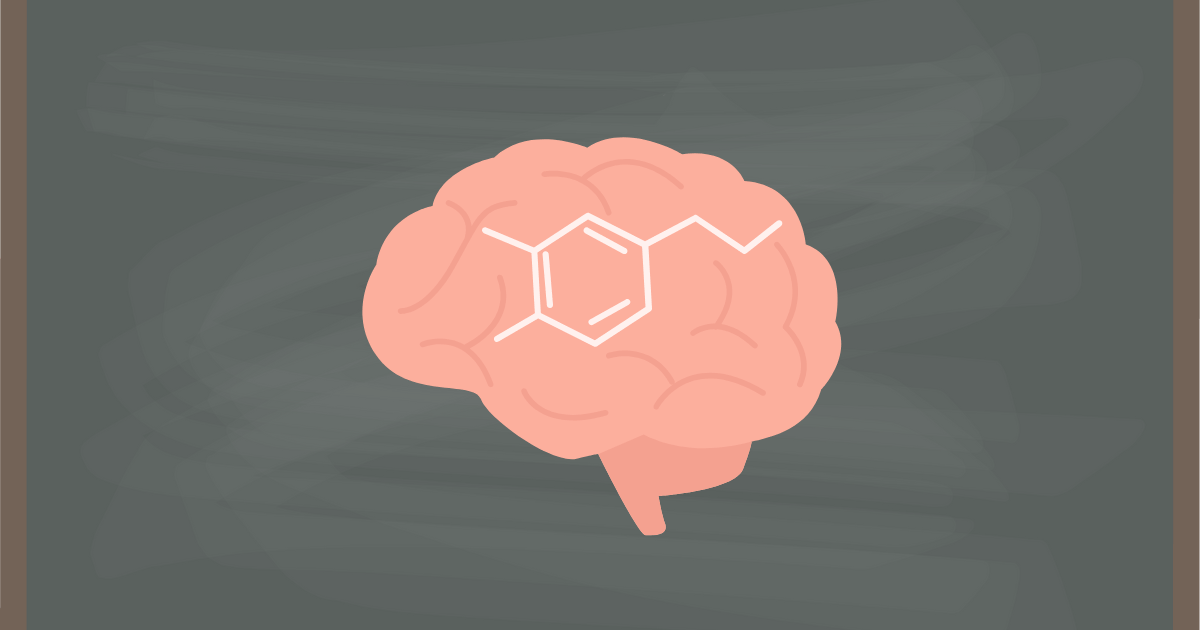- The PEN Weekly
- Posts
- Are you moving too fast - or too slow?
Are you moving too fast - or too slow?
Screens, dopamine, and your lesson plan.


MAKING IT EASIER TO BE A BETTER TEACHER
6 min. read
Kids scroll everything, from TikToks to “science hacks” that belong in the recycling bin.
Meanwhile, their brains are juggling dopamine like it’s an energy drink - fast bursts, slow drips, and all the messy learning in between.
This week, we’ve got a tool that helps you turn scrolling into critical thinking, and a study that shows why pacing your lessons like gears on a bike might actually stick.
Here’s what you’re about to master:
Noteworthy News: Who’s letting ChatGPT give advice? 😥
Tech Tool: Critical thinking is easier than you think 🧠
Brainy Bit: Harnessing the power of dopamine ⚕️
NOTEWORTHY NEWS
Here’s our weekly roundup of interesting education stories from around the world. Click each link to dive deeper:
For teachers who are looking for a new way to use AI in the non-classroom parts of their lives, we’ve got a neat sponsor this week we think you’ll love:
Your Memory: Now instantly searchable
Limitless is the wearable AI that instantly captures, transcribes, and remembers every meeting, conversation, and brilliant thought you have - securely, seamlessly, and privately. Transform how you work, live and never miss a beat again.
TECH TOOL

Turning “I read it online” into actual critical thinking
Let’s face it: students scroll. They scroll TikTok, YouTube, social media, and, yes, even science “experiments” that may or may not be real.
While curiosity is high, their ability to evaluate evidence and separate fact from fluff is… well, developing.
Teachers want students to engage with real science, understand data, and form evidence-based conclusions - but traditional classroom materials often fall short.
The Solution: Science Journal for Kids
This platform gives students age-appropriate, real scientific articles - all written for middle and high school readers. Students can read about current discoveries, explore data, and see the scientific process in action, all while building the critical thinking skills they’ll need in the real world.
Think of it like giving your students a mini science library at their fingertips, where every article is a chance to ask, “How do they know that?”
Here’s how it works:
Curated Research Articles: Students get access to actual science studies - but written in a way they can understand and analyze.
Critical Thinking Prompts: Each article comes with questions and exercises designed to guide students to think like scientists.
Cross-Disciplinary Use: Works for biology, chemistry, physics, and environmental science - plus reading comprehension skills come along for the ride.
Is This For YOUR Classroom?
If your students struggle with reading or need extreme hand-holding, these articles may feel dense at first. But with guidance, they can grow quickly - and develop the kind of critical thinking that will stick.
Strategies That Work:
Weekly “Science Detective” Sessions: Assign an article and have students identify claims, evidence, and conclusions. Compare notes in class.
Debate the Data: Students pick an article and argue the validity of its conclusions - practice reasoning and evidence evaluation.
In a world where students scroll everything, this tool helps turn curiosity into critical thinking - and gives you a ready-made way to teach the skills that textbooks rarely cover.
“When dopamine rises, so does your motivation to act.”
BRAINY BITS

Dopamine vs. Learning
TLDR: dopamine supports both fast, effortful learning and slower, habit-forming learning, and it can make hard work feel a bit less costly.
The Study: Does dopamine enhance student memory?
Adults learned picture-to-button matches in blocks that were easy (few items) or harder (many items).
Easy blocks favor working memory (fast but limited); harder blocks push the brain toward reinforcement learning (slower, repetition-based).
Researchers also measured each person’s natural dopamine with PET imaging and, in separate sessions, compared learning after a placebo, a dopamine-increasing medicine, or a dopamine-blocking medicine were given.
The Results:
Higher natural dopamine was linked to greater use of working memory, which sped early learning when sets were small.
The dopamine-blocking condition hurt performance by disrupting working memory; the dopamine-increasing condition boosted the brain’s slower trial-and-error learning rate (once working-memory effects were accounted for).
In a surprise test, people valued rewards earned in harder, high-load blocks less - but that “effort tax” was smaller under increased dopamine.
In Your Classroom:
Teach to both “gears,” and switch at the right time. Here’s how this study can benefit your classroom:
Strategies
Keep the first bite small. When introducing a brand-new concept, limit how much students must juggle - few examples, clear cues, worked steps.
Then train the habit. Move to short, repeated practice with immediate feedback so the slower system can wire it in.
Cut the “effort tax.” Hard tasks can feel less rewarding; chunk work, reduce avoidable complexity, and make progress visible.
The takeaway from this study isn’t medication - it’s sequencing. No fancy hacks required!
Teach like a transmission: start in first gear (small, clear steps that working memory can handle), then shift up to practice reps that build habits. Trim the “effort tax” by chunking hard tasks and celebrating quick wins so work still feels worth it.
WHAT’S NEXT?
Do you know someone who would appreciate reading The PEN? Share this newsletter with them! Our goal is to reach as many teachers as possible, and to build a community of teachers supporting teachers. 🍎
Looking to partner with The PEN?Every week, we count ourselves lucky that teachers around the globe read our newsletter! Join us on our journey for teaching excellence! To get started, reply to this email, or send a message to: |
REFERENCES
This week’s issue adapts information from the following sources:
Tech Talk:
Science Journals for Kids and Teens (2025). Hundreds of scientific articles/ Written for students. Approved by scientists. Retrieved from https://www.sciencejournalforkids.org/
Brainy Bits:
Westbrook, A., van den Bosch, R., Hofmans, L. et al. Striatal dopamine can enhance both fast working memory, and slow reinforcement learning, while reducing implicit effort cost sensitivity. Nat Commun 16, 6320 (2025). https://doi.org/10.1038/s41467-025-61099-0


Reply